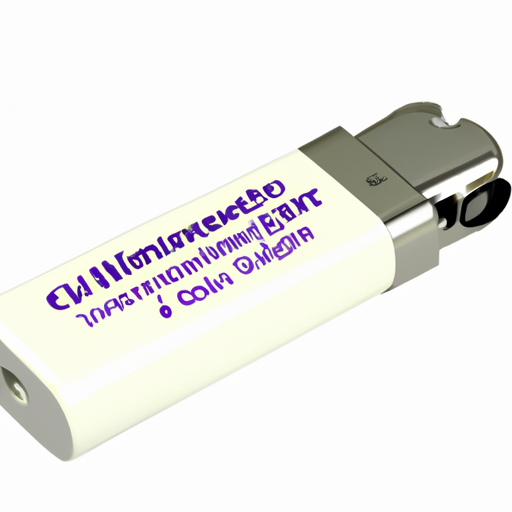Mainstream Cylindrical Battery Core Production Process: Standard Product Series Parameters
I. Introduction
Cylindrical batteries have become a cornerstone of modern energy storage solutions, powering everything from portable electronics to electric vehicles. Defined by their cylindrical shape, these batteries are known for their high energy density and reliability. As the demand for efficient and sustainable energy storage continues to rise, understanding the production processes and standard parameters of cylindrical battery cores is crucial for manufacturers and consumers alike.
Standardization in production is vital for ensuring quality, safety, and compatibility across various applications. This document aims to provide a comprehensive overview of the cylindrical battery core production process, highlighting the standard product series parameters that define their performance and usability.
II. Understanding Cylindrical Battery Cores
A. Components of Cylindrical Battery Cores
Cylindrical battery cores consist of several key components:
1. **Anode**: Typically made from materials like graphite, the anode is where the oxidation reaction occurs during discharge.
2. **Cathode**: Often composed of lithium metal oxides, the cathode is the site of the reduction reaction.
3. **Electrolyte**: This medium facilitates the movement of ions between the anode and cathode, playing a critical role in battery performance.
4. **Separator**: A porous membrane that prevents direct contact between the anode and cathode while allowing ionic movement.
B. Types of Cylindrical Batteries
Cylindrical batteries come in various types, each suited for specific applications:
1. **Lithium-ion**: Known for their high energy density and long cycle life, lithium-ion batteries are widely used in consumer electronics and electric vehicles.
2. **Nickel-metal hydride (NiMH)**: Commonly found in hybrid vehicles and rechargeable batteries, NiMH batteries offer good performance but have lower energy density compared to lithium-ion.
3. **Alkaline**: These non-rechargeable batteries are often used in household devices due to their affordability and availability.
C. Key Parameters Influencing Performance
Several key parameters influence the performance of cylindrical batteries:
1. **Capacity**: Measured in milliampere-hours (mAh), capacity indicates how much charge a battery can store.
2. **Voltage**: The electrical potential difference between the anode and cathode, typically measured in volts (V).
3. **Cycle Life**: The number of charge and discharge cycles a battery can undergo before its capacity significantly degrades.
4. **Internal Resistance**: A measure of how much the battery resists the flow of current, affecting efficiency and heat generation.
III. Production Process Overview
A. Raw Material Selection
The production of cylindrical battery cores begins with the careful selection of raw materials. Quality control measures are essential to ensure that the materials meet the required specifications. Additionally, sourcing practices must consider sustainability, as the environmental impact of material extraction and processing is increasingly scrutinized.
B. Manufacturing Steps
The manufacturing process involves several critical steps:
1. **Electrode Preparation**:
- **Mixing and Coating**: Active materials are mixed with binders and conductive additives, then coated onto metal foils.
- **Drying and Calendaring**: The coated electrodes are dried to remove solvents and then compressed to achieve the desired thickness.
2. **Cell Assembly**:
- **Stacking and Winding Techniques**: Electrodes are either stacked or wound together with separators to form the cell structure.
- **Insertion of Separators**: Separators are placed between the anode and cathode to prevent short circuits.
3. **Electrolyte Filling**: The electrolyte is injected into the cell, allowing for ion movement during operation.
4. **Sealing and Packaging**: The cell is sealed to prevent leakage and packaged for distribution.
C. Quality Assurance
Quality assurance is a critical aspect of the production process. Various testing methods are employed to ensure that the batteries meet industry standards and specifications. Compliance with these standards is essential for safety and market acceptance.
IV. Standard Product Series Parameters
A. Overview of Standard Product Series
Standard product series for cylindrical batteries are defined by common specifications that ensure compatibility and performance across different applications. Variations may exist based on specific use cases, such as high-drain applications or specialty devices.
B. Key Parameters for Standard Series
1. **Dimensions**: The diameter and height of cylindrical batteries are standardized to fit various devices.
2. **Capacity**: Standard capacities range from a few hundred mAh to several thousand mAh, depending on the battery type.
3. **Voltage Ratings**: Nominal and maximum voltage ratings are specified to ensure safe operation.
4. **Weight**: The weight of the battery is an important consideration for portable applications.
5. **Temperature Range**: Batteries must operate effectively within specified temperature ranges to ensure reliability.
C. Comparison of Different Series
Different series of cylindrical batteries cater to various needs:
1. **High-drain vs. Standard Use**: High-drain batteries are designed for devices that require significant power, while standard batteries are suitable for everyday applications.
2. **Specialty Applications**: Some batteries are tailored for specific uses, such as medical devices or power tools, requiring unique performance characteristics.
V. Industry Standards and Regulations
A. Overview of Relevant Standards
Several organizations establish standards for cylindrical batteries, including:
1. **International Electrotechnical Commission (IEC)**: Provides international standards for electrical and electronic devices.
2. **Underwriters Laboratories (UL)**: Focuses on safety standards for products, including batteries.
3. **Other Regional Standards**: Various countries have their own regulations to ensure safety and performance.
B. Importance of Compliance
Compliance with industry standards is crucial for several reasons:
1. **Safety Considerations**: Adhering to standards minimizes the risk of battery failures, which can lead to hazardous situations.
2. **Market Acceptance**: Products that meet recognized standards are more likely to gain consumer trust and acceptance.
VI. Challenges in Production
A. Technological Advancements
The battery industry is rapidly evolving, with innovations in materials and manufacturing processes. Staying ahead of technological advancements is essential for maintaining competitiveness.
B. Environmental Considerations
As environmental concerns grow, manufacturers must address waste management and recycling processes. Developing sustainable practices is not only beneficial for the planet but also enhances brand reputation.
C. Supply Chain Issues
The global supply chain for battery materials can be affected by various factors, including material shortages and geopolitical tensions. Manufacturers must develop strategies to mitigate these risks.
VII. Future Trends in Cylindrical Battery Production
A. Emerging Technologies
The future of cylindrical battery production is likely to be shaped by emerging technologies, such as solid-state batteries, which promise higher energy densities and improved safety. Advanced recycling methods will also play a crucial role in sustainability.
B. Market Demand and Growth Projections
The demand for cylindrical batteries is expected to grow significantly, driven by the rise of electric vehicles and renewable energy solutions. Manufacturers must be prepared to scale production to meet this demand.
C. Impact of Electric Vehicles and Renewable Energy
The shift towards electric vehicles and renewable energy sources is creating new opportunities for cylindrical battery manufacturers. As these markets expand, the need for efficient and reliable energy storage solutions will become increasingly important.
VIII. Conclusion
In conclusion, the production process and standard parameters of cylindrical battery cores are critical to the success of the battery industry. Standardization ensures quality, safety, and compatibility, while understanding the production process allows manufacturers to optimize their operations. As the industry continues to evolve, stakeholders must remain vigilant and adaptable to meet the challenges and opportunities that lie ahead.
IX. References
1. Academic journals on battery technology and materials science.
2. Industry reports from market research firms.
3. Publications from standards organizations such as IEC and UL.
This comprehensive overview of the cylindrical battery core production process and standard product series parameters serves as a valuable resource for manufacturers, researchers, and consumers interested in the future of energy storage solutions.













